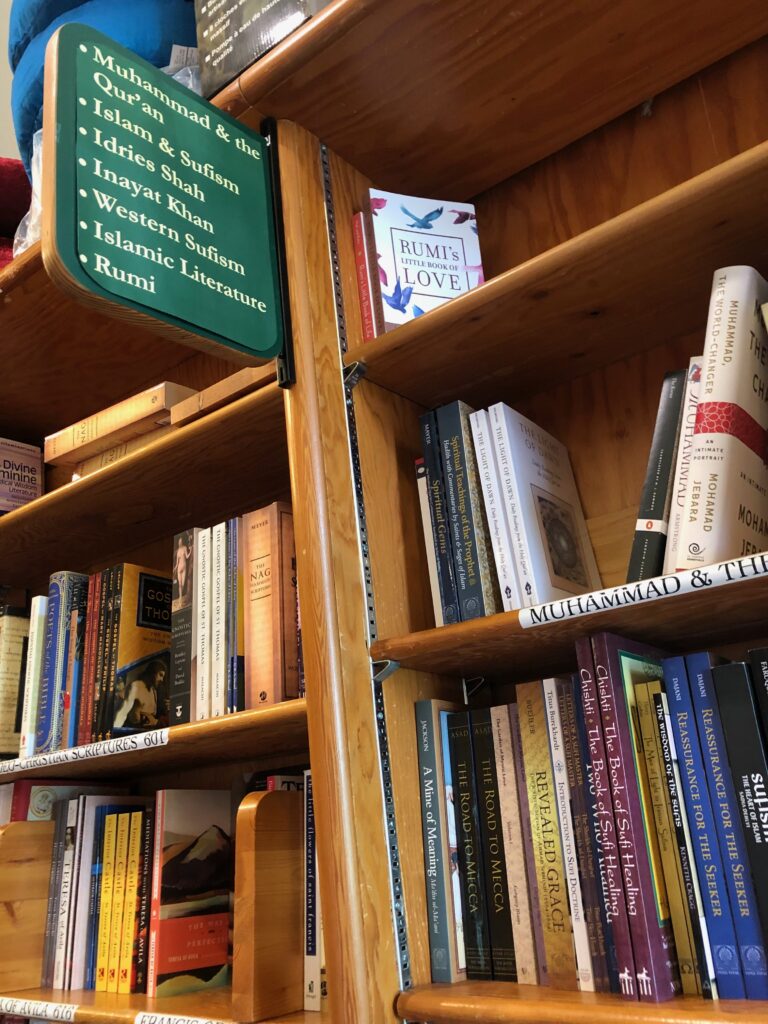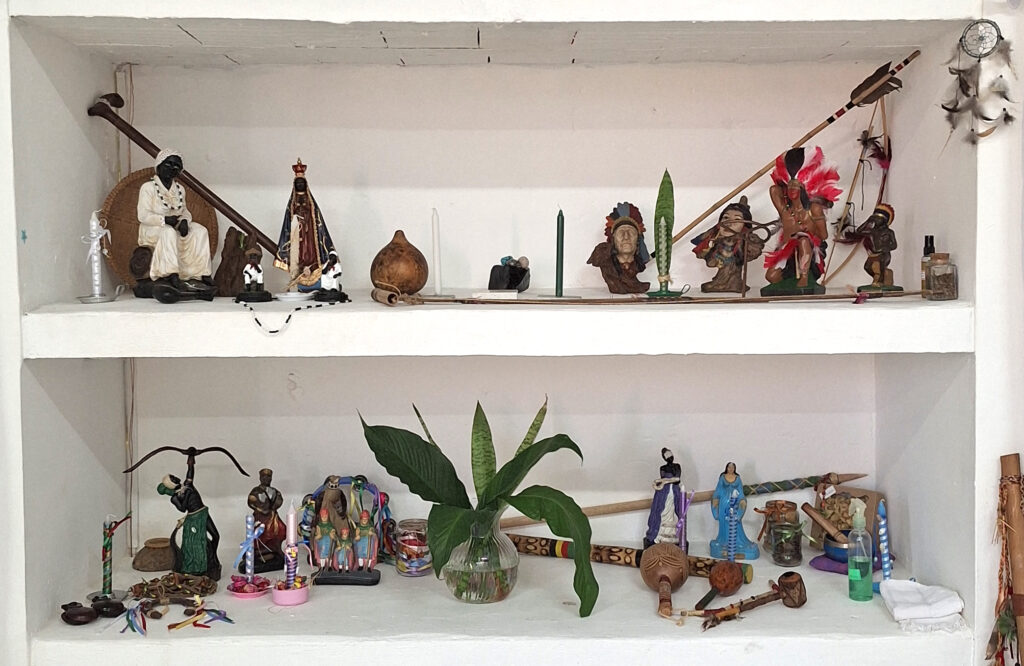By Viola Thimm
Imagine that you are a deeply spiritual Muslim person. Imagine that you are a spiritual and pious person who honours past Islamic leaders and scholars. Imagine that the graves of these leaders and scholars are still there and you know where they are. In these graves, the keramat graves, there is a “super power” according to your understanding. Your parents, grandparents and great-grandparents regularly visited these tombs and worshipped the dead. You want to go too. But your friends, colleagues and peers around you condemn this practice. They say that visiting these graves and worshipping there is something superstitious and therefore not acceptable in Islam.
Why is this so? Let’s explore the spiritual practices surrounding the graves of saints in Malaysia and the meanings attached to them. Visiting these keramat graves is a ziarah, which in Malay means any form of “visiting” without any necessary spiritual connotation. Ziarah is an act of piety (ibadah) and a means of paying respect to the dead and establishing continuity between the living and the dead. To ziarah (visit) keramat graves has been a common practice among Muslims in Malaysia in the past and is still practiced by a few to this day.

Keramat grave of Tok Kenali in a larger Muslim graveyard Kelantan (Malaysia) July 2017
Keramat is a Malay word (from the Arabic term karamah, plural karamat) that refers to sites containing the graves of (mainly male) people from a variety of religious and ethnic backgrounds, but is usually associated with Muslims. A keramat is bound to the person and the place, and is therefore not transportable. This means that people pray to the saint only at the grave, not at home or wherever the saint is physically located. Based on the concept of semangat (soul substance) in traditional Malay belief, keramat has been associated with places, people and objects.
Visiting the grave or tomb of a keramat person means, from a Muslim Malay perspective, that this person received keramat from Allah, which is a locally so called “super-power”. I was puzzled about this strong term. My respondent Siti Sal explained once: “Keramat is help from Allah granted to selected people to reward their piety.” I wanted to visit the grave of Tok Kenali, a Sufi from the Malaysian state of Kelantan believed to be blessed with keramat in the early 20th century and asked Siti Sal and her husband Salleh whether they want to accompany me. I was surprised that they were quite hesitant to do so because they acknowledged Tok Kenali as a respectable keramat person. I found out that the reason for their hesitation was that people usually venerate and worship the local saint and hope to get some of his “super-power”. This is something not acceptable according to contemporary Islamic doctrines in Malaysia. Faiz, a 39-year-old Muslim Malay who was happy to share stories with me about ziarah and keramat graves in June 2017, expressed:
“Some people misuse the keramat. Sometimes they go there and ask for lottery numbers, but this is a spiritual activity against Islam. So, sometimes we are worried that if we go there, we might be thinking that the keramat places can give us special things, we misuse the capability of our previous leader. They are supposed to pray to God, not to pray to their leader or any imam, right? People who misuse the keramat think that at the keramat grave, there might be a magic thing there“

Flowers thrown on the keramat grave of Sultan Al-Ariffin Melaka (Malaysia) Oktober 2017
Faiz is one of your colleagues who refrain from visiting a saint’s grave because he wants to distance himself from any forms of veneration there. Venerating Muslim saints is a legacy of Sufi Islam, a mystic strand in Islam, which was brought into the Malay Archipelago by Arab and South Asian Muslims (especially Tamil Muslims) over hundreds of years ago. More recently, Islamic institutions have shown a reluctance towards practices related to the keramat. Visiting keramat is problematised or even criminalised, as the practices performed at the keramat graves are rooted in syncretic traditions. In our conversation, Faiz talks about this aspect as well:
“People get confused at the keramat graves. Sometimes they just follow other people. Muslims and non-Muslims sometimes go to the keramat places. That’s why sometimes Muslims also put candles there. Because sometimes for ritual activities, they need a few things, right? Sometimes they need a candle, sometimes they need a lemon, sometimes they need a smelly stone, sometimes they need flowers. So that’s why they perform the activities there, which is actually not allowed in Islam. We call it syirik. Depending on other elements than Allah. It’s a mixed-up tradition. Imagine, I have an Indian friend, I have a Chinese friend, so my friends go there, then I also follow my friends there. And then maybe they bring along their kids and then my kids will go with my Chinese friends and then they are doing something which maybe is not allowed in Islam. So sometimes the Muslims are lost. They are confused whether this is right or wrong”

Keramat grave of Syarifah with an Indian Hindu venerating with flowers and a Malay Muslim reciting supplications Melaka (Malaysia) 2017
Your colleague Faiz is a very orthodox Muslim who discredit visiting and venerating the tombs of saints or other sacred sites as khurafat (superstitious), bidaah (something not part of the sunnah, i.e. not done and recommended by Prophet Muhammad and, therefore, something ‘added’ to Islamic practices) or syirik, that is, in opposition to Islam and to the shahada which states that there is only one God – and no other person that can be additionally worshipped. Faiz is not alone but is part of the larger Muslim society which follows Malaysian state institutions that discourage them to ziarah the keramat. Therefore, young Muslim Malay Malaysians nowadays are no longer familiar with the keramat, since Islamic revivalism in the 1970s, or stopped visiting the keramat over time. Faiz’s neighbour Farrah, who is a 49-year-old Muslim, joined our conversation and I asked her:
Viola: Do you never go to keramat?
“She responded: I last went when I was young. People will take the syeikhs who have keramat as saints and they will become a mediator between you and God, so that’s why my uncle, who brought me there in the past, told me that I must do certain things, put coins and make du’a [supplication] so that the syeikh will see this, because the syeikh has natural super-powers, something like that. So, when I was young, ya, I did that. But once I understood that I’m not supposed to activate du’a like ‘Syeikh, please tell God that I would like to bla bla bla’, that’s impossible. During that time, I was just following my uncle and he was just following the elderly”
So what do you do in this contradictory and ambiguous environment? Following your heart and ziarah the graves? Accepting your parents’, grand-parents’ and great-grandparents’ practices and attitudes that have shaped your own viewpoints so deeply? Or finding rationality in your neighbours’ and colleagues’ perspectives that adhere to Islamic orthodoxy? The majority of my Muslim Malay respondents follow the hegemonic discourse and keep their distance from the graves. However, this discourse targets predominantly exactly this ethnic-religious group. Hindu Indians celebrate the dead Muslim saints in the keramat graves along with other deities. But this form of “inclusivism” would be another story to tell…
#
PD Dr. Viola Thimm is an Associate Professor (Privatdozentin) of Anthropology at Heidelberg University and Senior Lecturer at the University of Erlangen-Nürnberg (FAU). Her research interests include cultural practices of im/mobility (especially those of transnational migration, pilgrimage and tourism); gender relations, sexuality, queer issues and intersectionality; Islam and its socio-cultural entanglements; kinship and family networks; local economies and consumer culture. Her regional focus lies in Southeast Asia (Malaysia and Singapore) and the Arabian Peninsula (United Arab Emirates, Oman), where she has carried out extensive ethnographic fieldwork since 2007.
____
Image 1: Flowers thrown on the keramat grave of Sultan Al-Ariffin Melaka (Malaysia) Oktober 2017 (Photo by author)
Image 2: Flowers thrown on the keramat grave of Sultan Al-Ariffin Melaka (Malaysia) Oktober 2017 (Photo by author)
Image 3: Keramat grave of Syarifah with an Indian Hindu venerating with flowers and a Malay Muslim reciting supplications Melaka (Malaysia) 2017 (Photo by author)
____
CAS-E blogs may be reprinted with the following acknowledgment: “This article was published by CAS-E on November 04th, 2024.”
The views and opinions expressed in blog posts and comments made in response to the blog posts are those of the author(s) and do not necessarily reflect the views and opinions of CAS-E, its founders, its staff, or any agent or institution affiliated with it, nor those of the institution(s) with which the author is affiliated.








